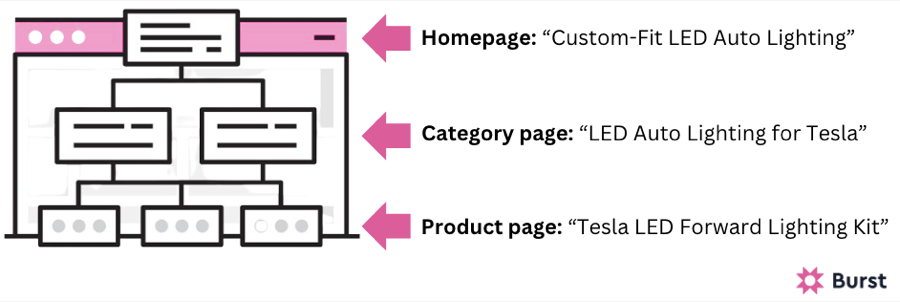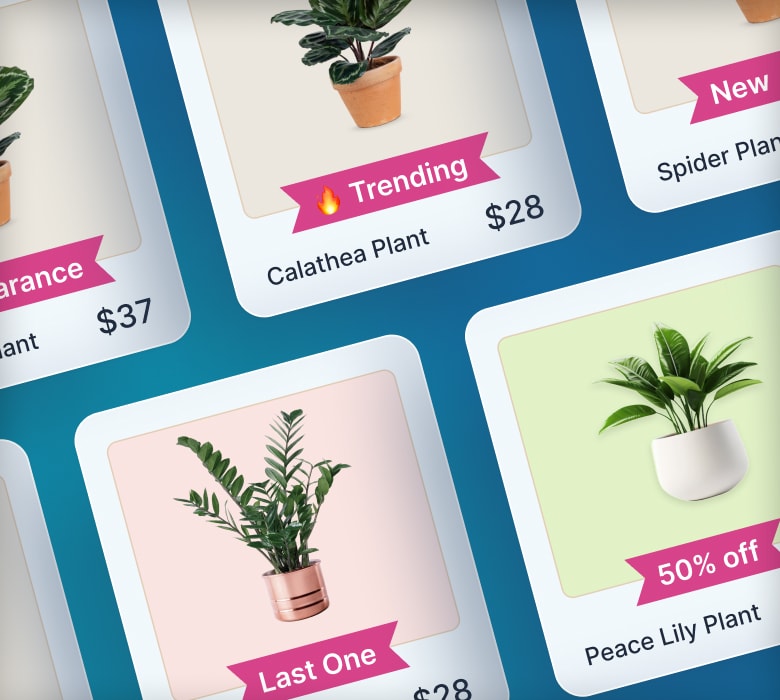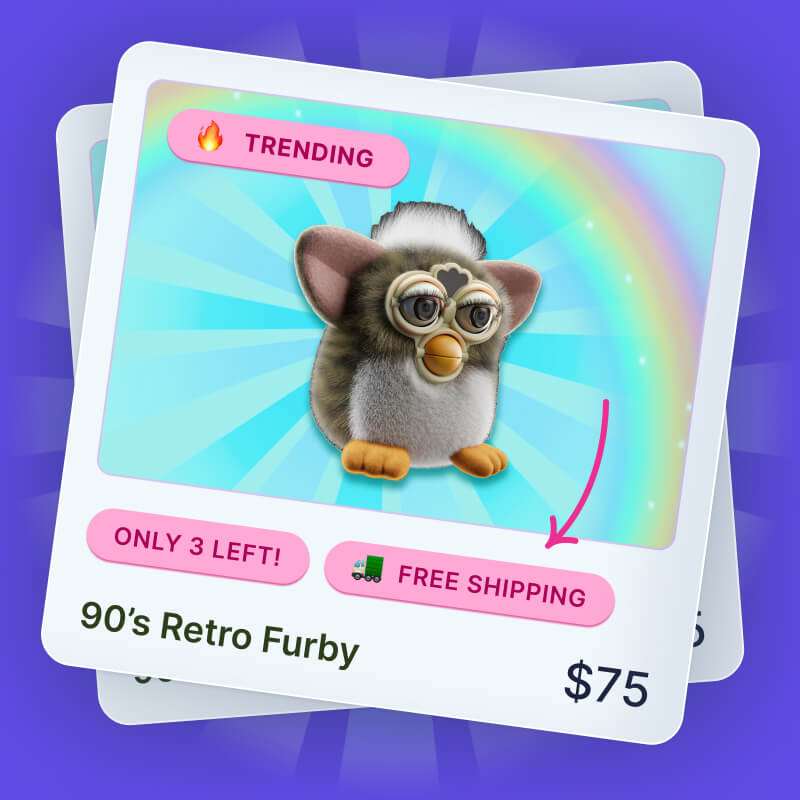How To Start an Auto Parts Store on Shopify

By 2030, the global market for auto parts is expected to surpass $1.1 trillion. So it’s no surprise that the auto parts niche is so attractive to prospective Shopify store owners.
Fancy your slice of the auto parts pie? You’re in the right place, because in this article we’re going to explain everything you need to know about opening a Shopify auto parts store, including:
- How to build and promote an auto parts store
- Top tips for running a successful auto parts retail site
- Ideas for profitable auto parts sub-niches
- Real-world examples of top-performing auto parts store
Start your engines…
Why Sell Auto Parts on Shopify?
Okay, so you want to start an auto parts store.
But why choose Shopify over a different e-commerce platform, like Magento or WooCommerce?
Let's dive into the game-changing benefits of Shopify:
- Effortless launch: Shopify transforms the daunting task of setting up an online store into a breeze with its plethora of ready-to-use themes, catering to both tech wizards and novices alike.
- Wallet-friendly solutions: While Shopify Plus caters to the big leagues with its $2,000+ monthly plan, you can craft a stunning, top-performing online store for as little as $29 per month – a steal for budding entrepreneurs.
- Limitless creativity: Unleash your imagination with Shopify's unmatched customization options, allowing you to sculpt a store that's not just tailored to your business needs, but downright unforgettable for your audience. Thanks to its intuitive website editor and treasure trove of apps, the sky's the limit!
- SEO superpowers: Propel your store to the top of search engine results with Shopify's built-in SEO toolsarsenal. From tweakable title tags to meta descriptions and URLs, Shopify equips you with the tools to make your mark in the digital realm.
- Hassle-free hosting: Bid farewell to the headache of external hosting providers. With Shopify, your store enjoys the luxury of being hosted on its servers, ensuring seamless management and one less thing on your entrepreneurial plate.
Pro tip: We think Shopify’s great — but is it right for your store? Learn more in our article: Shopify Pros and Cons: Unbiased Insights.
Is Selling Auto Parts on Shopify Profitable?
Did you know the average American spends 55 minutes a day commuting to and from work? That’s 333+ hours a year.
And the vast majority of those commutes take place by car:
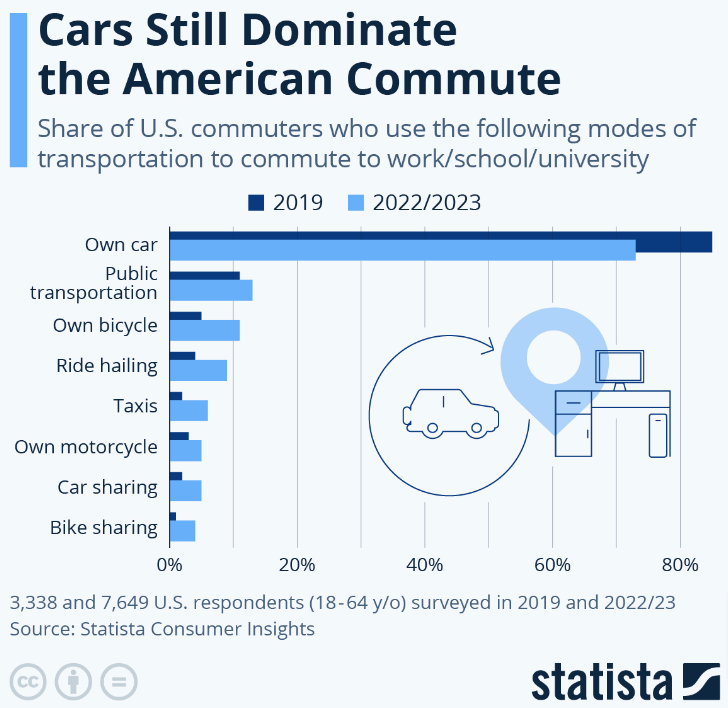
Given all that time spent behind the wheel, it’s inevitable that US consumers spend a ton of money on their cars.
For instance, in 2022, Americans splashed out almost $114 billion on auto parts and accessories, up 9% year on year.
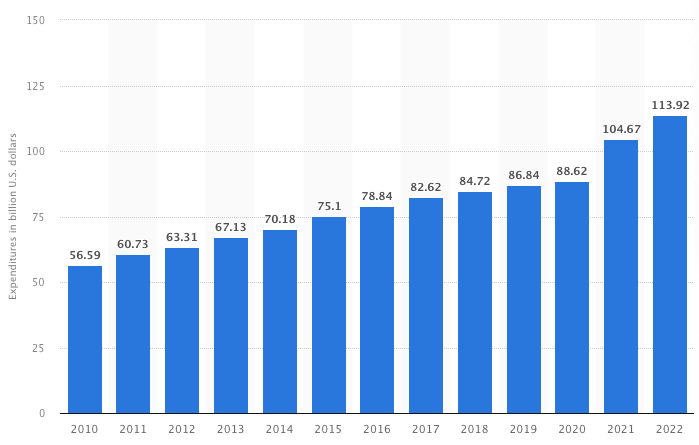
All of which means there’s a ton of earning potential for anyone planning to open a Shopify auto parts store.
But the good news doesn’t stop there, because there are also countless profitable sub-niches within the broader auto parts market. Bumper covers are the top-selling auto part in the US, generating online revenues of $4.1+ million from 2022-23, while other popular categories include:
- Brake pads
- Lightbulbs
- Wiper blades
And that’s just for starters.
Honing in on one of these sub-niches makes it easier to promote your store and ensures you aren’t competing with massive, generalist auto parts retailers like AutoZone and O’Reilly Auto Parts.
How To Sell Auto Parts on Shopify
By this point, we’ve made two things clear:
- Auto parts is an attractive e-commerce niche
- Shopify is a superb e-commerce platform
Now let’s bring those two parts together by explaining how to sell auto parts on Shopify…
Step 1. Conduct Market Research
The first step to opening your Shopify auto parts store is to find a niche with:
- Lots of potential customers
- Plenty of growth potential
- Attractive profit margins
One of our favorite tactics for discovering promising niches involves exploring Flippa, an online marketplace where businesses are bought and sold. But here's the twist: we're not there to make purchases — instead, we're on a mission to uncover niche ideas by analyzing the types of markets that have been embraced by successful auto parts stores.
From the Flippa homepage, hit the Search button (without adding a keyword)...
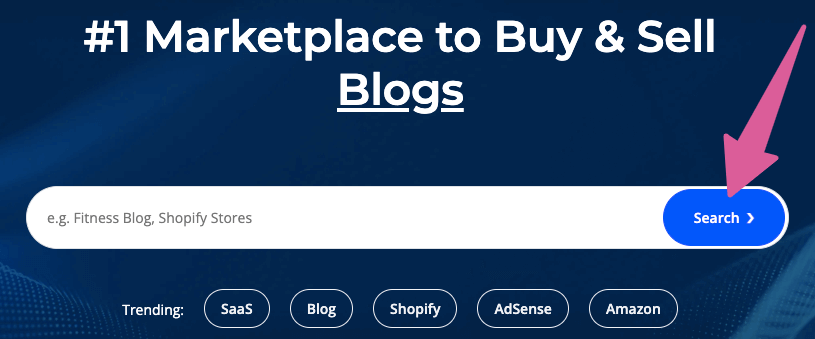
Then apply the following filters in the left-hand menu:
| Filter | Selection |
| Revenue-generating | Yes |
| Asset type | Websites and online businesses |
| Website types | E-commerce
Dropship Digital products |
| Industry | Automotive
Cars Motorcycles Other automotive |
Now, it’s simply a case of trawling through the results and taking a closer look at any that catch the eye.
For instance, this store…
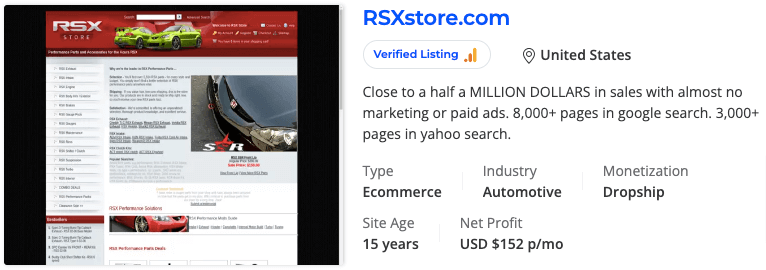
…has made almost $500,000 in sales, with minimal marketing spend, by specializing in auto parts and accessories for a specific vehicle: the Honda RSX.
Take a look at the performance overview to identify peaks and troughs in traffic and sales.
For example, our RSX specialist sees pretty consistent page view volumes…
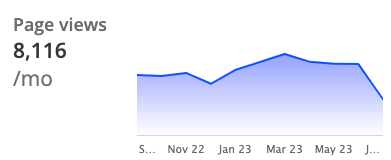
…which suggests that, with a little TLC and some smart promotion, the RSX niche could generate sales all year round.
Scroll through all the listings, identify the niche for each result, and take note of any that appeal.
Then choose your favorite.
Pro tip: For more profitable niche ideas, check out our guide: What to Sell on Shopify.
Step 2. Create a Business Plan
Crafting a business plan is like a road map plotting your route toward a successful Shopify auto parts store. It should incorporate the following information:
- Executive snapshot: A quick peek into your store's mission and goals.
- Business breakdown: Dive into the heart of your business - its niche, offerings, and what makes it special.
- Market analysis: Take a look at your target market, competitors, and where your store fits in.
- Team overview: Introduce the folks behind the scenes and their roles.
- Product portfolio: Showcase your store's offerings and what makes them stand out.
- Marketing strategy: Lay out how you plan to attract customers, including pricing strategies.
- Funding needs: If seeking investment, outline your requirements and expected returns.
- Financial projections: Forecast your expenses, revenue, and when you expect to break even.
- Supporting documentation: Include any extra materials like charts or graphs to back up your plan.
Step 3. Sign Up for Shopify
You've got your niche sorted and your business plan’s ready to roll.
Now, it's time to sign up for your Shopify FREE trial. This trial period gives you just enough time to familiarize yourself with the platform and set up your store.
No need to fret about payment details right now — Shopify simply asks for some basic info about your business:
- Are you already selling (online or offline), or is this your first retail venture?
- Which channels are you planning to use to connect with your audience?
- What types of products or services do you intend to sell?
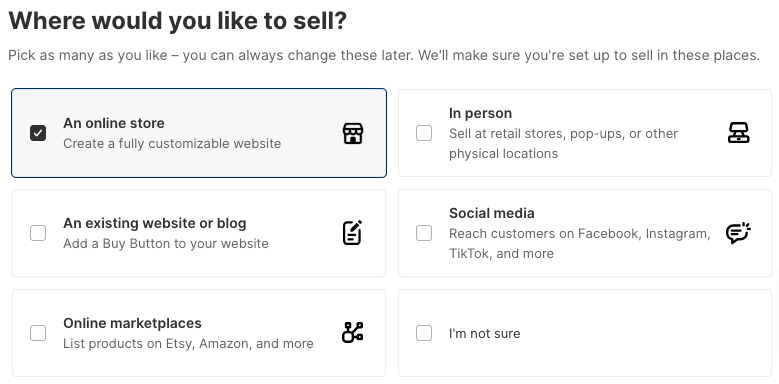
It's a low-pressure opportunity to explore and experiment. So, take your time, enjoy the process, and remember, there's plenty of room for adjustments along the way!
Step 4. Design and Build a User-Friendly Shopify Store
Now that you've kicked off your free trial, it's time to dive into building your Shopify auto parts store.
Pro tip: Before you begin, make sure to browse through our Shopify get started guide. It can serve as a handy reference as you piece together your store.
As you embark on designing your store, keep these key points in mind to ensure a user-friendly experience:
- Opt for a mobile-optimized theme: With over half of global web traffic coming from mobile devices, it's crucial to choose a theme that functions seamlessly on smartphones and tablets. Luckily, all of Shopify's "official" themes are designed with mobile users in mind.
- Showcase your unique selling points: Make sure visitors grasp what sets your auto parts store apart and why they should choose you as soon as they land on your site.
- Craft compelling product descriptions: Go beyond listing specifications by highlighting the specific benefits each product offers to your target audience.
- Simplify the path to purchase: Streamline the shopping experience by optimizing store navigation and leveraging features like site search to make it easy for customers to find what they need.
Pro tip: Looking for advice on converting store visitors into paying customers? Don't miss our guide: How To Increase Conversion Rates on Shopify.
Step 5. Add Auto Products To Your Store
While your auto parts store still has that new car smell, it’s time to fill it with auto parts. Here’s how to do it:
- Log in to your Shopify admin and click Products in the left-hand menu.

- Click Add product at the top-right of the screen.

- Write your product title and description (jump to our section on writing compelling product descriptions for conversion-driving tips).
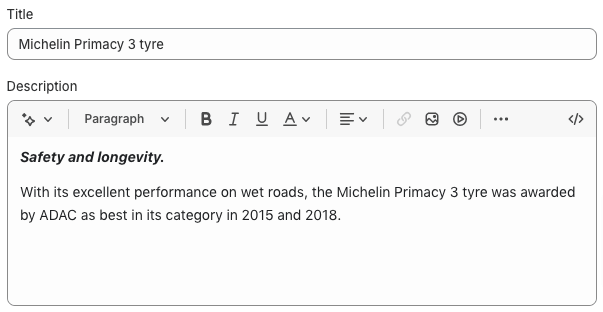
- In the Media section, add your product images by uploading from your device, pasting a URL, or drag-and-dropping.

- In the Pricing section, set your product price (and, if required, your compare at price).

- Also in Pricing, add your cost per unit so you can calculate your per-unit profit and margin within your Shopify admin.

- In Inventory, ensure Track quantity is ticked, then add the number of units that are currently in stock.

- Also in Inventory, use the tick boxes to create a SKU or barcode to help with inventory management, and to tell Shopify if you want to keep selling this product when your stock levels hit zero.

- In the Shipping section, use the tick box to confirm that you’re adding a physical product, then enter the product weight in the field below.

- If relevant, use the Variants section to add any size, color, material, or style variants of your product.
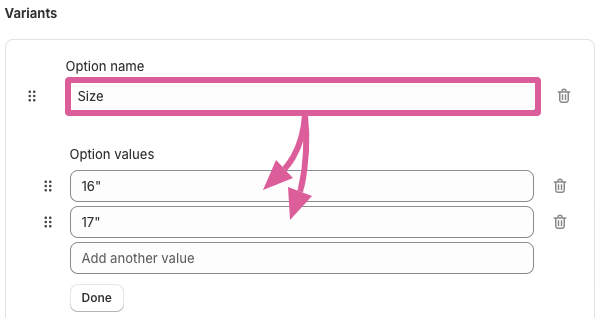
- For any variants you add, remembering to include unique SKUs and inventory levels (and product images, if relevant).

Added all the necessary information? Hit Save to add your new product to your auto parts store.
Then repeat the process until you’ve created listings for all your products.
Write Compelling Product Descriptions
Adding products to your auto parts store isn’t just about technical stuff like product images, weights, and inventory levels.
It’s also your opportunity to boost conversions by crafting product descriptions that convince shoppers to buy now.
For instance, Michelin adds social proof to this product description by referencing the tire’s performance in third-party tests from ADAC, Europe’s largest automobile association:
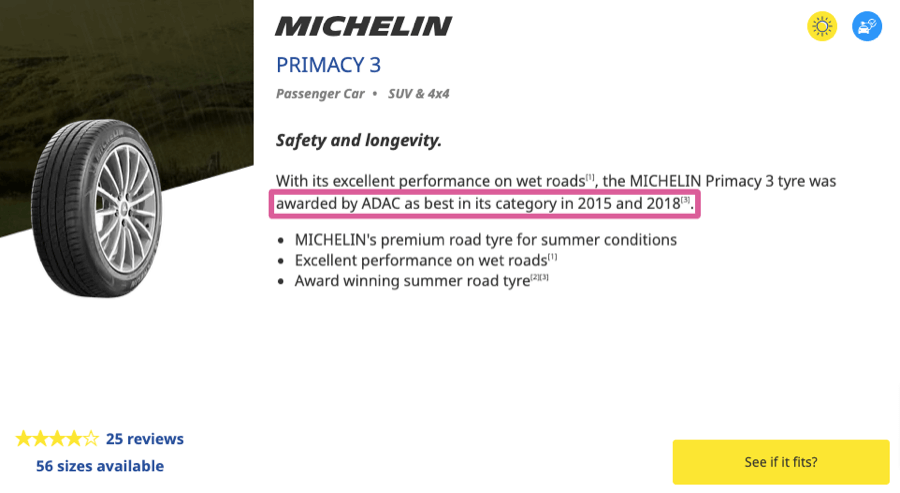
And it includes a bunch of other conversion-driving details, like:
- The product’s review score
- The conditions it’s best suited for
- The types of vehicles it fits
Basically, all the information a customer needs to be certain that this tire is right for them.
Step 6. Integrate Payment Gateways
Exchanging products and services for money is kind of an important element of e-commerce success.
So it’s about time we souped up your online store by adding payment methods.
For most merchants, the simplest option is to set up Shopify Payments, the platform’s built-in payment gateway. Here’s how:
- Log into your Shopify dashboard.
- Click Settings in the left-hand menu.
- Click Payments > Activate Shopify Payments.
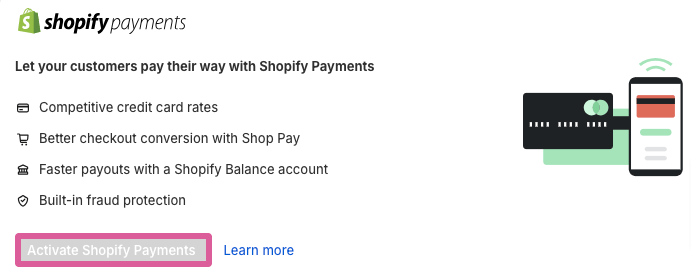
Unfortunately, Shopify Payments is only (currently) available in 23 countries. So if your store is based in a different location, you’ll have to use a different payment provider.
Browse the available options in the Payments section by clicking See all other providers.

Step 7. Launch Your Shopify Store
Within your Shopify admin dashboard, there’s a helpful section called "Things to do next", which holds your hand through the final stages of setting your auto parts store live:
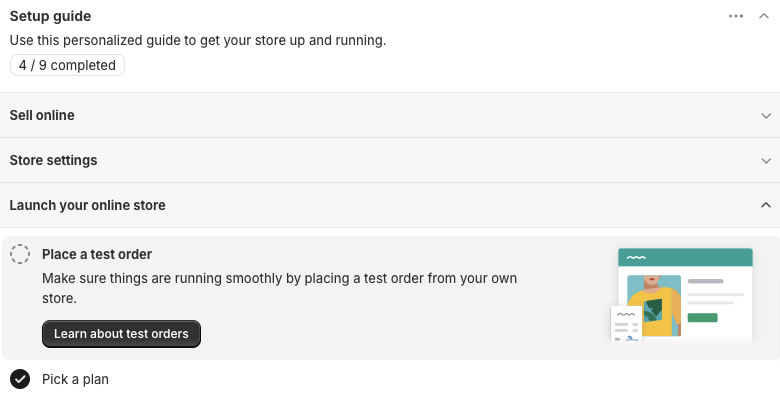
It covers e-commerce fundamentals like:
- Adding products
- Configuring shipping rates
- Placing a test order to ensure everything works as expected
Once you’ve ticked off all the items on Shopify’s checklist, you’ve reached the checkered flag in this metaphorical endurance race.
So it’s time to launch your store cue anthems and champagne spraying.
Step 8. Promote Your Auto Parts Store
Creating a high-converting Shopify store is just the beginning for your online auto parts business. The next crucial step is implementing effective marketing tactics to attract the right customers, convince them to visit, and close the deal.
There’s a ton of promotional strategies available to Shopify auto parts retailers, including:
SEO
Search engine optimization involves identifying relevant keywords with high search volumes, then targeting those keywords through different pages on your website.
More specific, long-tail keywords should be targeted on deeper pages within your site architecture. For an auto parts store specializing in LED lighting, this could look like:
PPC
Pay-per-click (PPC) advertising allows you to bid to have your store's ads displayed for particular keywords on search engines like Google.
You pay a fee every time someone clicks on your ad — hence the name “pay-per-click”.
While requiring an ongoing ad spend, PPC generates traffic instantly rather than the weeks (or months, or years) it can take SEO to produce results.
Social Media
Platforms like Facebook, Instagram, and TikTok allow you to raise brand awareness, build an audience, and share your latest promotions.
But social isn’t just for engagement — you can also use it for direct selling.
For example, in this post, AutoZone used Instagram to share a recent positive customer review:
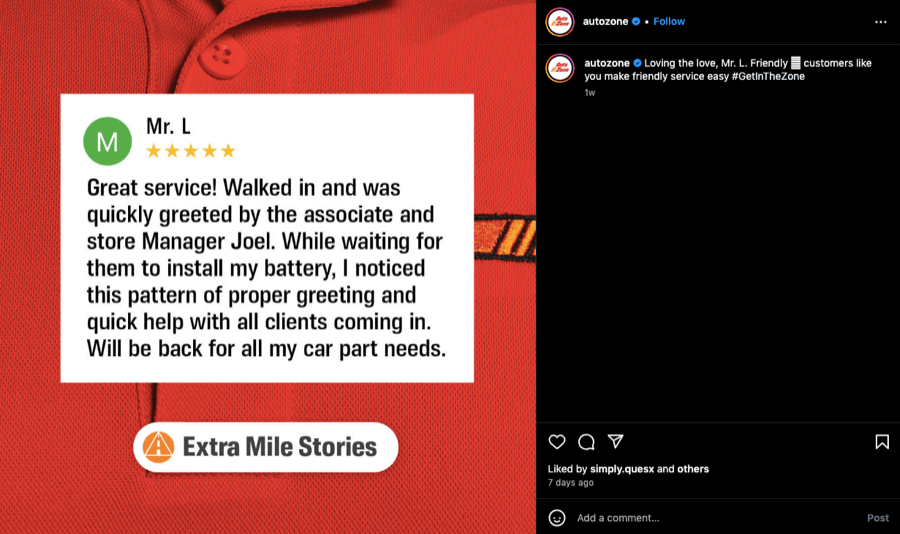
Any car owner who wants to sample some of that five-star service can hit the link in AutoZone’s Insta bio…

…then click straight through to the brand’s online store.
Email Marketing
Email delivers the highest return on investment of any marketing channel, at a spectacular $36 for every $1 spent.
But before you can unlock those benefits, you need to build your email list.
That’s why many auto parts stores use on-site popups to capture emails. Just like DipYourCar.com, which tempts visitors to hand over their email address by offering a 15% discount on their first order (plus exclusive access to sales):

Affiliate Marketing
This strategy involves partnering with bloggers, influencers, and content creators to promote your auto parts store for you.
But we all know there’s no such thing as a free lunch, and affiliate marketing is no different. Every time your affiliate partners generate a sale, you’ll have to pay them a commission (say, 10% of the sale value).
Still, the ability to tap into all those existing audiences is well worth the small hit to your margins.
Pro tip: Like the sound of affiliate marketing? Find out more in our guide: Affiliate Marketing vs Dropshipping: Which One is Better?
Step 9. Create Urgency and Scarcity
Nothing lights a fire under potential buyers quite like "urgency" and "scarcity" - two magic words that can supercharge your Shopify sales. Harness them strategically in your messaging to:
- Amplify the perceived value of your products
- Create a sense of exclusivity around your brand
- Compel customers to convert before missing out
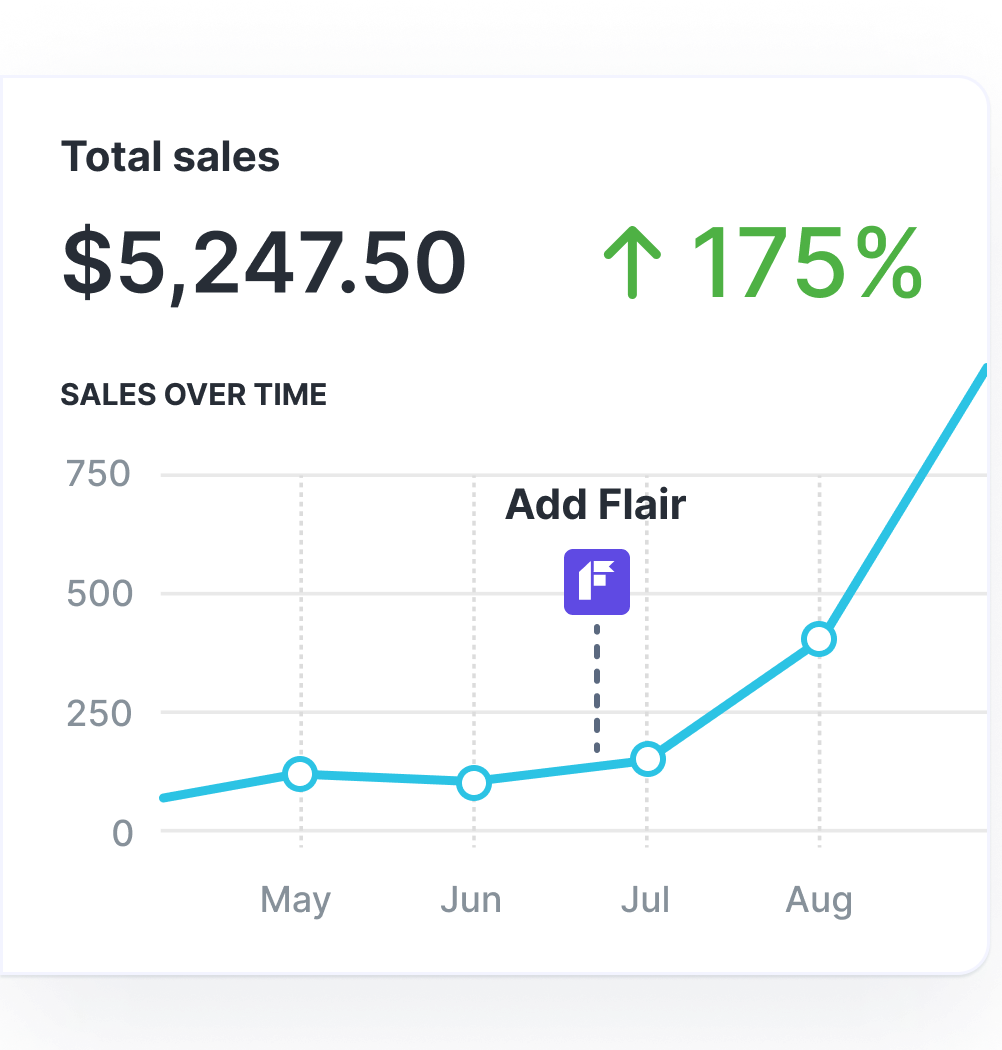
Grow Your Shopify Sales by over 175% with Flair
-
Increase sales using product badges and sales banners
-
Maximize conversions with scarcity, urgency and countdown timers
-
Automate promotions with targeted rules and scheduling
Step 10. Monitor and Improve
Launching your Shopify auto parts store is like driving the first few miles on a never-ending road trip toward optimization and growth.
During the journey, you’ll need to continually:
- A/B test landing pages
- Target new keywords
- Experiment with fresh promotions
As if that wasn’t enough to keep you occupied, search engines and social platforms frequently update their algorithms, making it challenging to maintain — let alone increase — your traffic and sales.
This ever-evolving landscape requires you to constantly analyze your analytics to identify what's driving results and what needs recalibration.
An intimate understanding of your performance data will be critical to unlocking incremental improvements and sustained e-commerce success.
Tips To Succeed at Selling Auto Parts on Shopify
Hard as it might be to believe, you’re not the first person seeking their fortune through a Shopify auto parts store. Fortunately, that means you can learn from the successes (and failures) of all those merchants who came before you.
For the best results, make sure you:
Pick a Suitable Shopify Theme
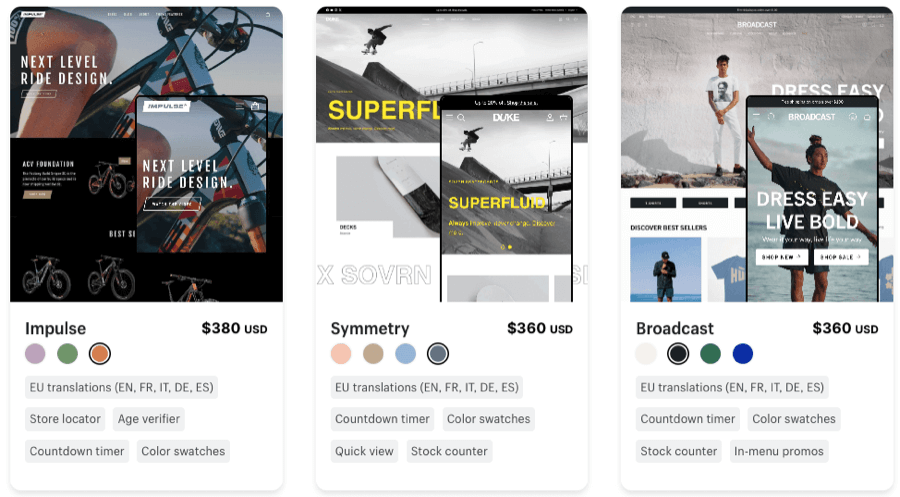
Picking a mobile-friendly Shopify theme is simple enough, but there are several other elements to consider when picking an appropriate theme for your auto parts store:
- Niche match: Shopify lets you filter themes by industry, so going with one built for the auto parts world just makes sense style and function-wise.
- Feature checklist: Themes differ big time in what they can actually do. Need breadcrumbs? Quick-view products? Promo menus? Building a list of specific must-haves will cross a bunch of basic themes off the list.
- Catalog capacity: Some bare-bones themes are limited to just nine products, which isn’t enough for most auto parts stores. So make sure you pick a theme with enough space for your inventory.
- Budget boundaries: Shopify offers a bunch of free themes, while paid options start at $140. But the more bells and whistles you demand, the more you’ll have to pay. Draw up a list of desired features, divide the essentials from the nice-to-haves, then choose the theme that does the most stuff at the best price.
Have Clear CTAs Throughout the Site
Strategically placed calls to action (CTAs) are powerful tools for driving shoppers toward your most compelling products and promotions. By adding attention-grabbing CTAs to high-visibility areas across your website, you’re subtly (but persuasively) nudging customers along the path to purchase.
Auto tools and detailing supplies retailer Obsessed Garage clearly got the message, because one of the first things you see when landing on its homepage is a “Shop Now” CTA:
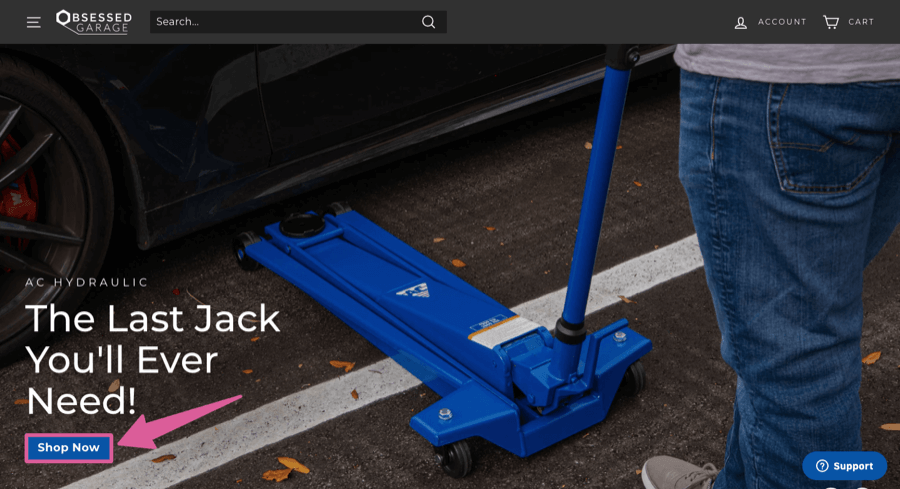
Deliver Exceptional Customer Service
Did you know that over half of Americans are willing to pay extra for top-notch customer service?
Additionally, a staggering 83% of consumers express greater loyalty to brands that promptly address and resolve their concerns.
By providing outstanding support, you not only retain your customer base, but also have the potential to charge premium prices for your products or services.
Choose High-Quality Imagery
A poorly designed website is a big turnoff. Because if you can’t design a decent landing page, why would I trust you with my car’s brake pads or shock absorbers?
So it pays to elevate your Shopify store design by incorporating captivating imagery.
Don’t worry, you don't need to be a professional photographer or graphic designer to achieve this.
Start by capturing product photos against a clean white background, ensuring you show them from various angles.
Additionally, consider leveraging resources such as:
- Stock image galleries (e.g. Freepik and Unsplash)
- Simple graphic design tools (e.g. Canva and Design Wizard)
- Generative AI tools (e.g. DALL·E 2 and DeepAI)
Pro tip: Be sure to optimize your images so they display correctly across your site, load rapidly, and appear in relevant Google results. Learn how in our guide to Shopify image optimization.
Craft an Attention-Grabbing Tagline
While no one expects you to write the next “Just Do It”, there’s no denying that a snappy tagline can be a powerful asset in establishing a clear niche and communicating your value proposition.
And if you need a little inspiration, you can always find it in your rivals’ Instagram bios:

Ideas for Selling Auto Parts on Shopify
The auto parts market is full of high-potential niches, such as:
Auto Tools
Auto tools range from lightweight wrenches to heavy-duty jacks, and cater to both individual customers and auto parts businesses.
Ensuring the safe and secure shipment of these items is paramount, regardless of their weight or size. But then, the same applies to any niche.
External Auto Parts
External auto parts — such as bumpers, grills, and side mirrors — are among the top-selling items on platforms like eBay and Amazon.
Their popularity stems from their ease of replacement, making them accessible even to those with limited automotive knowledge.
These parts often require sizable shipping boxes, but are less delicate than internal components (more on them shortly). Still, if you're venturing into selling auto externals, it's crucial to consider the shipping logistics:
- Which shipping company offers services that align with your product specifications?
- How can you set attractive shipping charges without hitting your own margins?
- Do you plan to ship interstate, and if so, what are the associated costs?
Internal Auto Parts
Like wheels and suspensions, internal components typically require installation by a mechanic rather than the end consumer, so they’re not exactly mass-market products.
Also, given their fragility, these items often require meticulous packaging — including plenty of bubble wrap for protection during shipping.
But don’t let that put you off, because there’s still money to be made here; you just need to find the right audience.
Wheels and Suspension Components
Just like internal parts, wheels and suspension components are complicated, which means they generally require fitting by a bona fide expert.
So they’re not the most obvious fit for an e-commerce store.
However, there are plenty of retailers out there making big money selling these types of auto products — like WheelMax and KW Suspensions.
And if they can do it, why can’t you?
Successful Shopify Auto Parts Store Examples
You've learned the ropes of building a Shopify auto parts store, gathered practical tips for steering your online business to success, and explored intriguing car-related product niches.
Now, let's wrap things up with some inspiring real-world examples of top-performing Shopify auto parts stores:
Relations Race Wheels
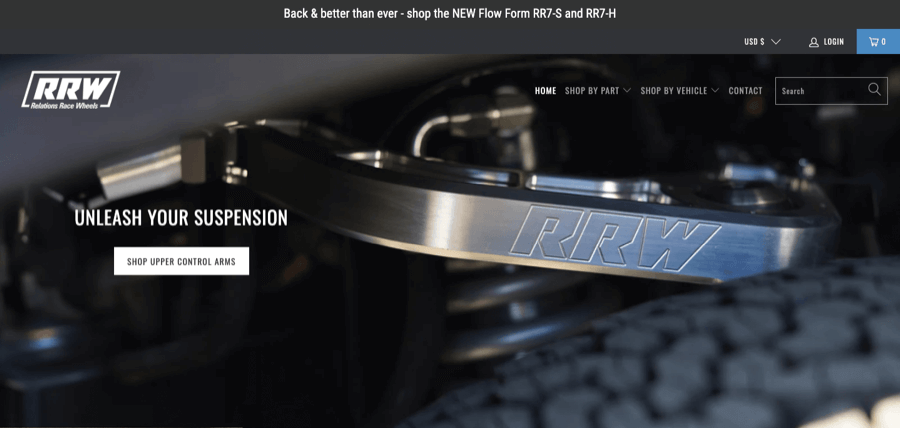
- Shopify theme: Turbo
Relations Race Wheels has carved out a groove selling high-performance wheels, suspension parts, and accessories for burly off-road vehicles like the Ford Bronco and Toyota RAV4. It also makes money from B2B sales by offering wholesale rates to other e-commerce businesses and aftermarket parts retailers.
Phoenix Automotive
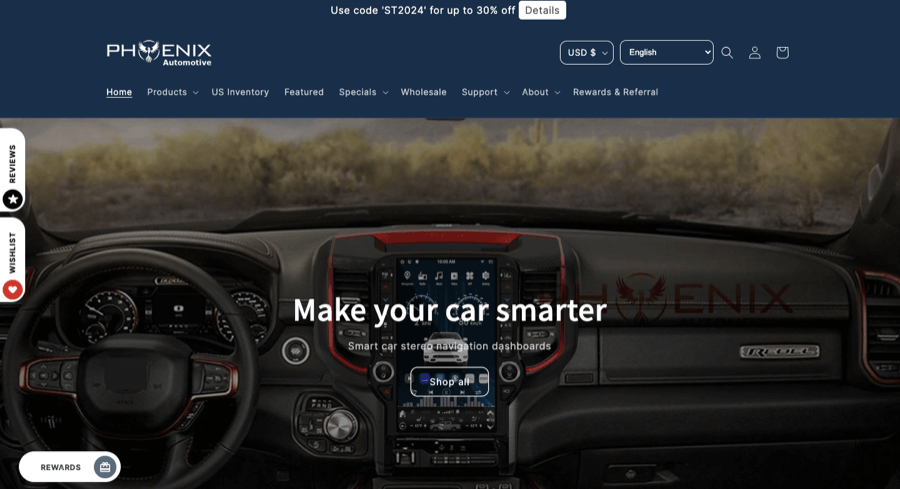
- Shopify theme: Dawn
Another Shopify auto parts store with a highly specific niche, Phoenix Automotive specializes in smart car stereo navigation dashboards — with a particular emphasis on Ford vehicles. In other words, it’s identified a lucrative niche-within-a-niche, which is one of the best ways to avoid competing with big-name generalist retailers.
Auto Parts Lab
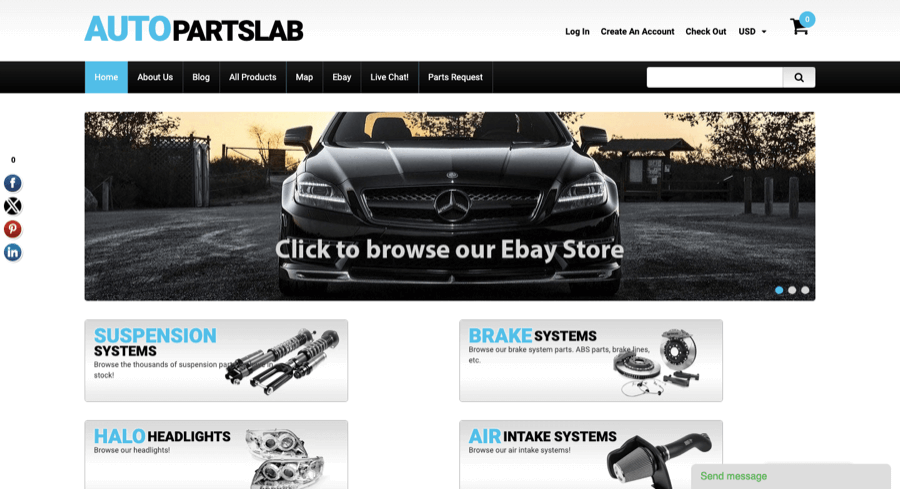
- Shopify theme: Custom
Auto Parts Lab started out as an eBay store before expanding by launching its own Shopify-powered auto parts store. Unlike the previous two examples, it has a broad product focus, stocking everything from suspension arms to halo headlights to air intake systems. Still, if 26,000+ eBay sales and a 99.1% seller rating are anything to go by, they do it pretty well.
Conclusion
Auto parts isn’t the simplest e-commerce niche to crack, requiring a decent level of technical knowledge and industry awareness to figure out what wi’ll sell.
But it’s worth persevering with.
Everyone knows that cars are basically a bottomless money pit, which means there’s tons of potential for repeat purchases.
Once you’ve shown a customer that you sell quality products at a reasonable price and offer excellent support, there’s a good chance they’ll keep buying from you for years — long after their current car is permanently residing on the nearest scrap heap.
FAQ
Is Starting an Auto Parts E-Commerce Website a Good Idea?
Yes! The global auto parts market is expected to be worth $1.1 trillion by 2030, and building an auto parts e-commerce store is your chance to grab a piece of the action. Plus, there’s no shortage of attractive niches within the broader market, from tools and accessories to wheels and suspension systems.
Can I Sell Auto Parts on Shopify?
Yes, you can absolutely sell auto parts on Shopify. Plenty of other Shopify merchants are already making money selling auto parts, including:

